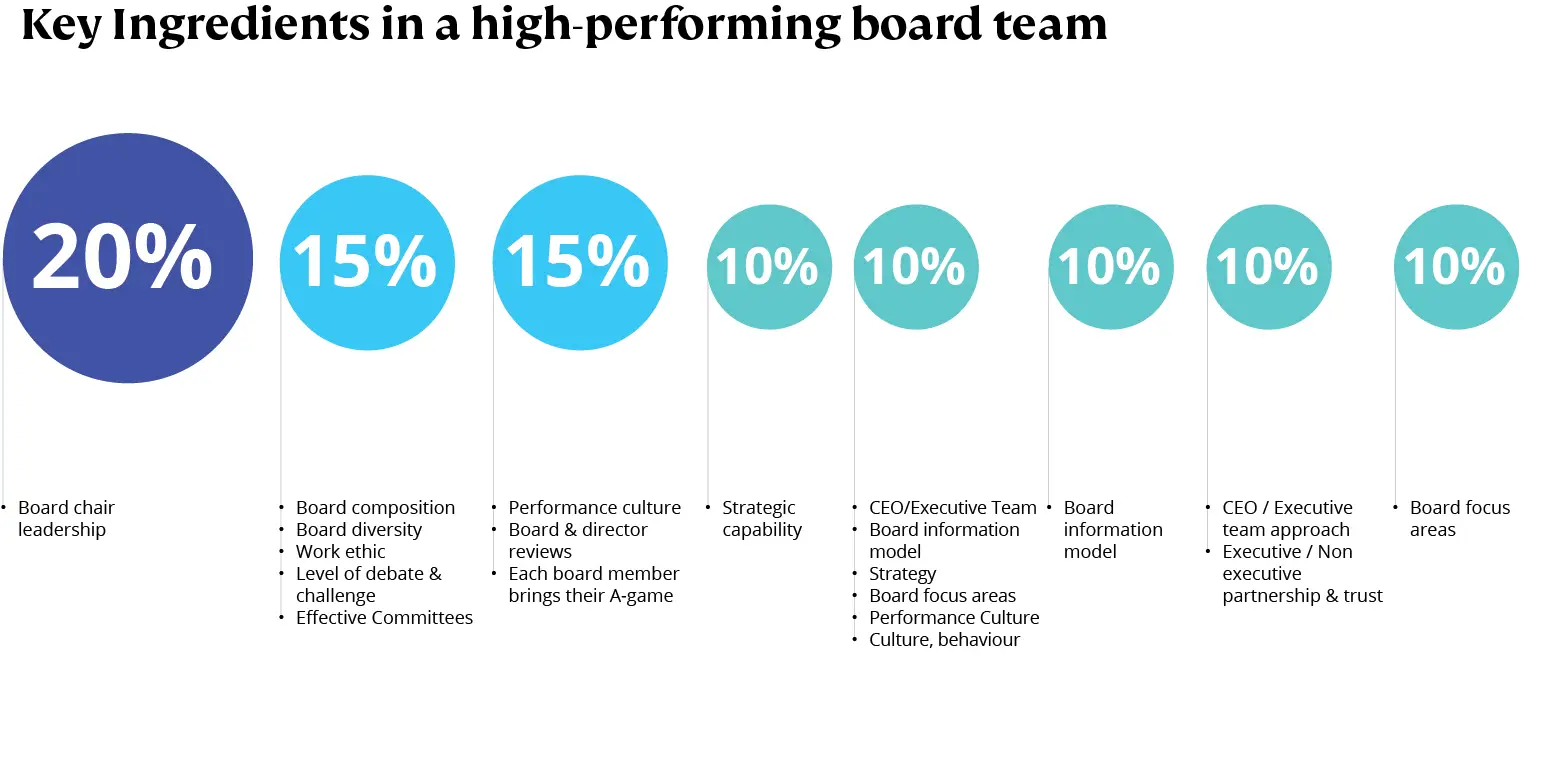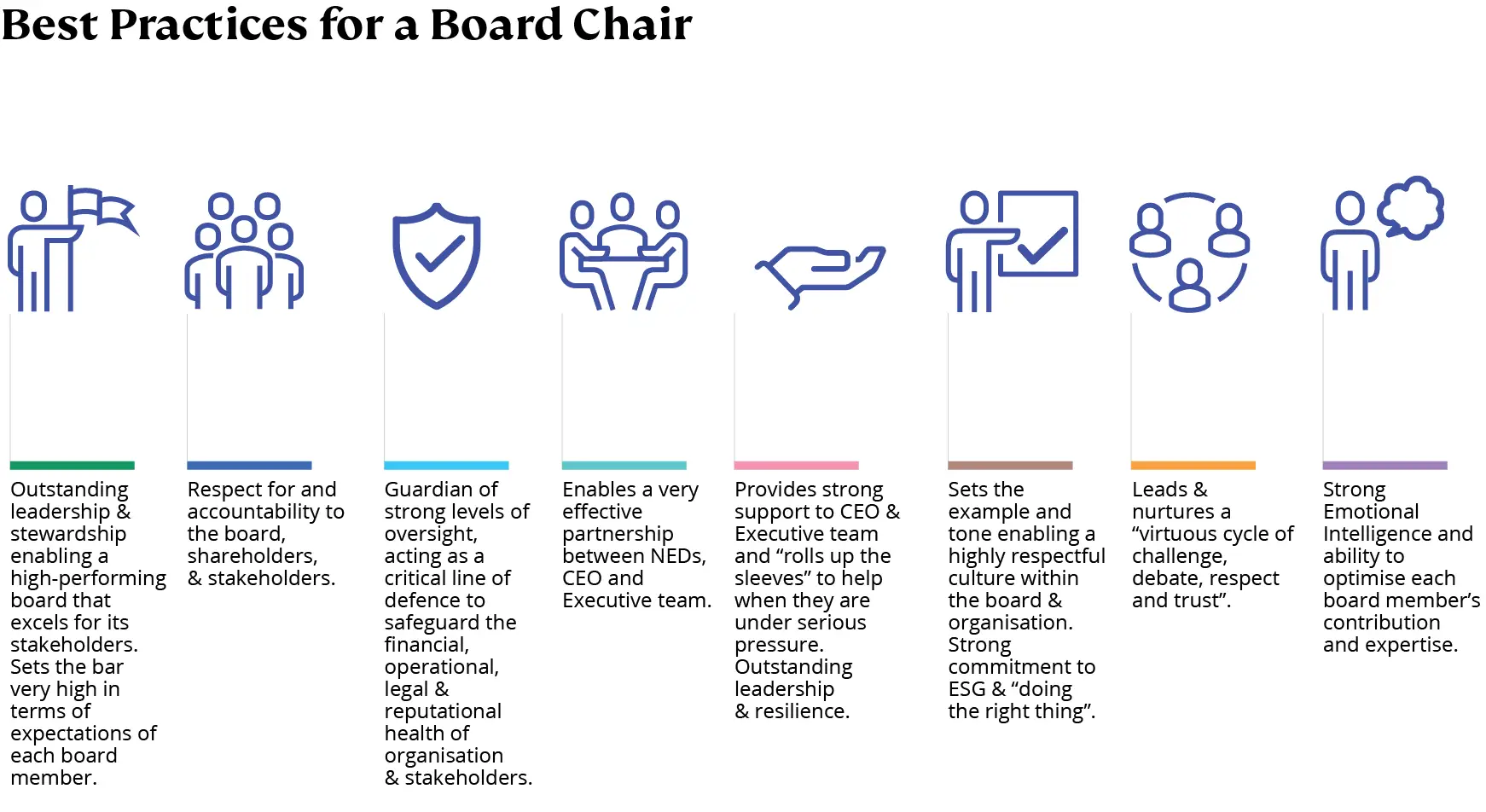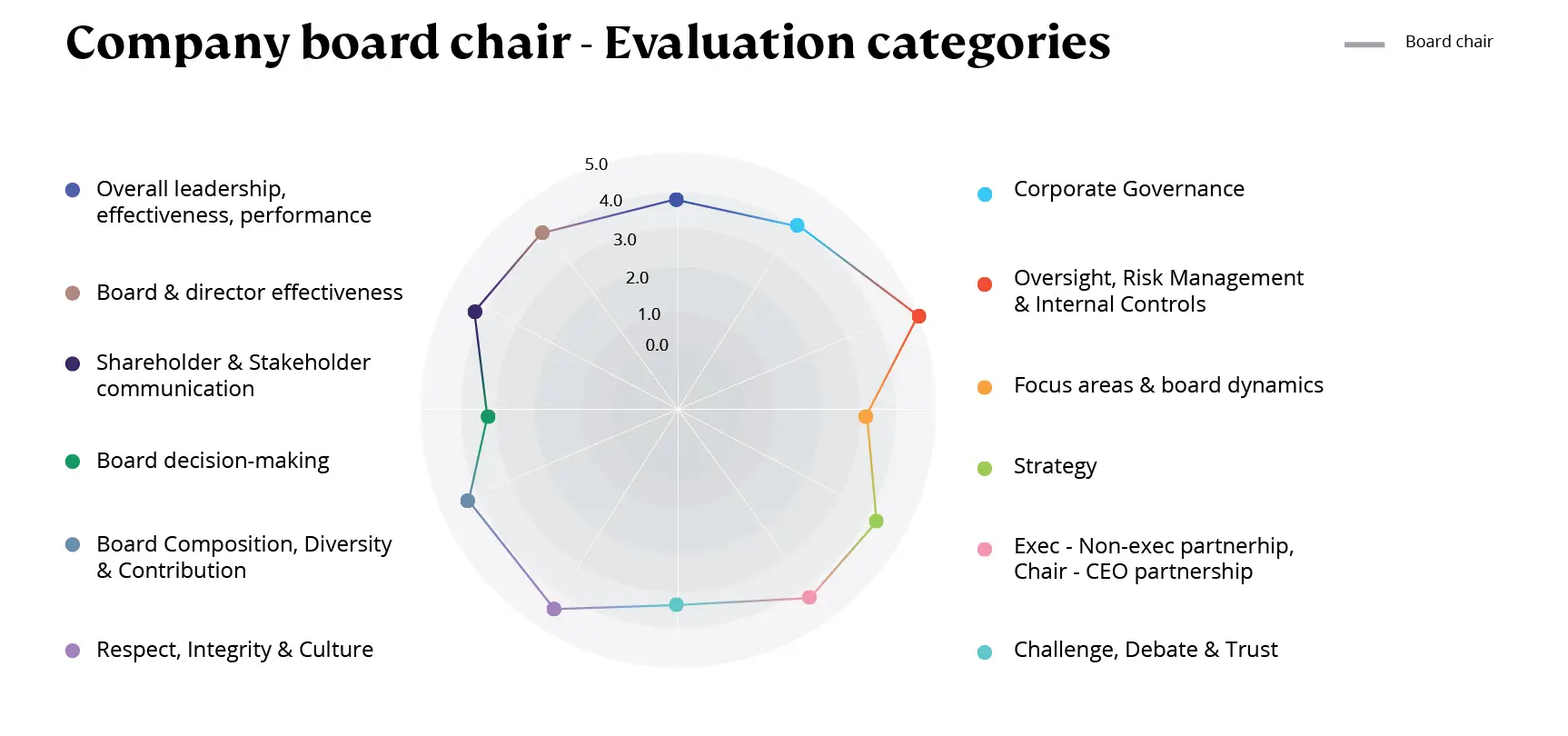In a recent webinar on how boards have been handling the Covid-19 crisis, an experienced non-executive director put the following question to me during our Q&A session : “My company board is really struggling right now. We have a poor calibre board chair who is failing to demonstrate any leadership, our board effectiveness has been poor for many years but has collapsed even further in this last 6 months and our board chair’s sole key focus is keeping our major shareholders onside with him that he is doing a marvellous job leading the board and organisation through the crisis. How do we as non-executive board directors face up to “the elephant in the room” that we have a poor-quality board chair that should and would be replaced if our shareholders and stakeholders could only actually see the consistent poor performance and leadership of the board chair?”
My first reaction to this question was to indicate to the board director and the audience that this dilemma around a poor quality, under-performing board chair or board chair demonstrating in-appropriate behaviours represents one of the most difficult dilemmas and problems in terms of a board of directors. I then proceeded to outline an approach which I have covered in detail below.
In evaluating and supporting board teams week to week, I have seen a very wide spectrum of board chairs, from the exceptional board chairs who inspire their board teams to outstanding performance excelling for their shareholders and stakeholders to average board chairs who “are a solid safe pair of hands” and finally to poor quality board chairs of the type outlined in the opening paragraph. Before we look at how we recognise and address this serious problem, it is first important to take a step back and understand just how critical the role of a board chair is. The diagram below from our board best practices workshop highlights the characteristics of highperforming board teams. When any of my team and I’m sure any board practice around the world, get asked “What is the single most important factor when it comes to a board’s effectiveness and performance?”, we would respond in a heartbeat “the quality and leadership of the board chair”.

In my experience, the board chair’s calibre, leadership, performance, stewardship and behaviours have a disproportionate impact on a board’s effectiveness and performance. Where you have a great board chair in place, “he/she raises all boats” and we have often seen the board chair enable not only each individual board member to contribute effectively but also galvanise the board to be an outstanding team in their own right excelling for shareholders and stakeholders. An outstanding board chair sets the bar high on every aspect of the board, from the level of challenge and debate to ensuring a genuinely diverse board is in place and regularly refreshed to the culture, behaviours and values of the organisation, genuine customer-centricity and employee engagement with the board chair and board members “walking the talk” in setting the tone for the rest of the organisation. The opposite is also unfortunately true, where you have a poor calibre or underperforming board chair in place, it can often drag the board down despite the individual calibre of board members being in many cases quite high. To help illustrate this further, the following diagram below highlights the best practices we see strong board chairs exhibit.

With this in context, I will now outline the common types of problematic and under-performing board chairs. In some cases, I have seen board chairs illustrate a number of these characteristics simultaneously!
Overly-dominant board chair : This is perhaps one of the most common types where you have a very strong-willed board chair who dominates the board, over-contributes in terms of their own viewpoint and does not listen effectively to, encourage and enable an optimum contribution from other board members. It’s important to say that I have seen cases of this where the board chair is genuinely very strong in terms of calibre, judgement and expertise but nevertheless over-impacts on discussions, decision-making and can create a special type of group-think problem where the rest of the board feel very intimidated and under pressure to go along with the board chair’s viewpoint.
Board chair too close to the CEO and creates a miniboard effect : This represents an interesting combination of multiple cases I have seen where a board chair is too close to the CEO, discourages the type of high-quality robust challenge and debate that should be taking place and often ends up “managing the board” where it might appear on the surface that there is a functioning board in place but in reality the de-facto decision-making entity and power in the board rests within the board chair, the CEO and a small sub-set of “trusted” board members who really call the shots both within and outside of the boardroom. Sometimes when I hear of an outstanding non-executive board member leave a board prematurely, this is often the reason. This is also a particular hallmark of many problematic “legacy-oriented” boards I have seen.
Preservationist Board Chair : This is still quite a common occurrence where you have a board chair who is stuck in a type of time-warp of how boards used to function 20 years ago and is stubbornly refusing to oversee the board evolving to a modern progressive board. I passionately believe this type of problematic board chair is one of the major root causes of why in 2020 we still have such a challenging problem in terms of board diversity, particularly in gender, age and ethnic background. When it comes to a board being genuinely slow to embrace Environment, Social and Governance (ESG) and employee engagement, I often find there is a preservationist board chair in place who simply does not believe these are important and will either discourage any attempts by other board members to prioritise these or grudgingly agree to a bare-minimum focus on these.
“Politician” board chair : By its very nature, the board chair role requires a significant level of skills in terms of engagement and influencing with all the organisations shareholders and stakeholders. The politician board chair takes this to a different level where instead of outstanding leadership and enabling a great board team, they focus their energies on “preserving their position”, engaging heavily with major shareholders/stakeholders and doing just enough to have a functioning board with enough support amongst the board to not have to look over their shoulder in terms of their performance being questioned.
In-experienced/Out-of-their depth Board Chair : This is very much a different type of problematic scenario to the others in that here you have a board chair who has the right calibre and qualities, wants to do the right thing but simply does not have the experience to be able to genuinely lead the board. A boardroom can be a very intimidating place and in many cases, an inexperienced board chair needs to learn very fast to adapt, gain the respect of the board and executive team.
Board chair who does not have the attributes and skillset for the board chair role : There is often an assumption that it is a very natural transition for an experienced nonexecutive director with 20 to 30 years board and executive experience to become a board chair. Nothing could be further from the truth – I have seen many cases over the years of board chairs, despite all their years’ experience serving on boards and in the executive ranks, simply do not have the skillsets, judgement, emotional intelligence and overall board leadership skills to be a strong board chair. I have seen a number of board chairs who over-estimate their board leadership skillset and actually don’t realise what good really looks like in terms of an outstanding board chair.
Board chair who does not gel with the board and CEO/Executive team : I have seen cases over the years where a genuinely capable experienced board chair gets appointed to a board and for whatever reasons, simply does not get with the Board team and/or CEO/Executive team. This is no fault of anyone’s but the reality is that what can often happen is that over time, this impacts on the board effectiveness and performance, the “trust equation of the board” does not develop and the board chair, despite their best efforts, is not capable of getting the best out of the board team.
Under-performing board chair : This is a general catch-all for cases of a board chair, with the right skills and attributes, who has lost their way and or struggling for a wide variety of reasons that could be related to personal issues, health, stress etc. The board chair can be a very lonely role and many board chairs have often shared with me how difficult they found it to admit that they are struggling. As a board chair myself and having supported many board chairs across many countries over the years, I can testify first hand as to the stresses and challenges of the role, particularly in a larger organisation that is in the public eye.
Over the years, I have studied literally hundreds of accounts of board scandals, corporate collapses and major crises at boards and organisations all across the world, particularly in the corporate sector but also in non-profit, charity board and public sector boards. In quite a significant majority of these, I believe poor chair leadership, concrete actions and in-action in certain cases by the board chair were a very significant contributor to the eventual collapse or scandal. In many of these cases, this was far from being an overnight crisis and you can identify patterns of serious poor leadership and bad judgement by the board chair where he/she allowed poor levels of oversight of a CEO/Executive team, excessive risk levels becoming common and cheer-leaded, shocking gaps in internal controls, disgraceful behaviours and treatment of customers and employees, bullying and harassment culture at the most senior levels of the organisation and in some cases, an abject failure of the fundamental responsibility of a board chair and board team to protect the financial health and future of the organisation for their shareholders and stakeholders. In quite a number of the media coverage of these scandals, there is a very common quote appears from shareholders, institutional investors and stakeholders along the lines of “With such an experienced high-profile board chair in place, we can’t fathom how this scandal has happened”. Therein lies a very important truth than in the vast majority of cases, shareholders and stakeholders can often have very little insights into the “board black box” and how the board chair is actually performing and behaving.

So how does a board, who after serious thoughtful
consideration recognise that they have a serious issue with
the effectiveness and performance of their board chair,
face up to this and address the problem?
This truly represents the $64,000,000 question as the nature of the board chair role, how it is appointed by the shareholders/stakeholders of the organisation and the optics and sensitivity of the board chair role means that this is a very challenging area that needs to be handled very thoughtfully as there are literally landmines everywhere. It is particularly challenging when you have a high-profile chair who is well known in the sector and at a national/international level. It is also important to recognise that in so many countries, there is a particular reverence for board chairs, particularly long-serving board chairs, and this increases the challenges for board members to face up to a serious problem with the board chair. It’s also important to note that there are two significantly different scenarios here. The first is where the board team believe they have the right board chair, but they need the board chair to modernise, up their game, change some of their behaviours and demonstrate the full range of positive board chair characteristics described earlier. The second more serious scenario is where the board team collectively feel that the board chair needs to be replaced. This is a 10x more complex scenario that has major ramifications for the organisation, will ultimately need to be decided by the shareholders/stakeholders of the organisation, can have significant legal complexities and for a large organisation in particular, such as a listed stock market company or a large charity/non-profit/public sector board, is fraught with reputational complexities.
To address both cases, it is important to start with explaining what the ideal process for a board chair in terms of a fair balanced thoughtful assessment of the board chair’s contribution, effectiveness, leadership and performance is. This is achieved by a comprehensive annual board chair evaluation process whereby a senior non-executive member of the board ( commonly referred to as the Senior Independent Non-Executive Director (SID) in stock-market listed companies and as the Vice-Chair in certain board types ) leads the evaluation of the board chair across a range of the key categories and in which the SID receives input from all of the board members. This provides board members with a proper structured opportunity to provide feedback to the board chair, which is anonymised by the SID. At the same time, the board chair is conducting annual evaluations of each board member so there is a very clear performance culture set for all board members. The following diagram from our Best Practices Guide for the Annual Board Chair Evaluation illustrates a typical set of key focus areas for the annual board chair evaluation process.

Where this process is conducted well by an experienced SID or vice-Chair, it is a very thoughtful constructive way to provide honest thoughtful feedback to the board chair on the areas he/she is doing well on and more importantly the areas where he/she needs to improve. I have seen many board chairs respond well to this and genuinely make the changes needed. I have however often seen board chairs who purposefully do not implement annual board member evaluations as they are un-comfortable with being evaluated themselves which is a very poor example to set to the board, executive team and the whole organisation.
Where a comprehensive annual board member and chair evaluation process isn’t in place, another mechanism that can help address these issues is an external board evaluation. I have rarely seen internal board evaluations work effectively in dealing with serious board chair under-performance issues. Due to the critical importance of the board chair’s impact on board effectiveness and performance, any serious external board evaluation process includes a specific evaluation of the board chair’s effectiveness and performance. In this process, an experienced external evaluator builds their own independent picture of the board chair through a combination of confidential searching questionnaires completed by board members, a review of the last 12 months board materials, confidential interviews with all of the board members, CEO and executive directors and finally a very detailed meeting with the board chair. Where an external evaluator identifies serious issues in terms of the board chair’s leadership, effectiveness and performance, it needs to be handled very thoughtfully. As an external board evaluator, I do not hesitate to face up to the “elephants in the room” and have had very delicate and forthright discussions with board chairs where I provide my independent perspective, highlight the issues in a thoughtful constructive manner and put a big effort into identifying an action plan to improve in the key areas. In 90% of cases, I have found board chairs to be very open to this as they genuinely recognise that they have to set the example in terms of leadership and performance for the whole board and executive team. They are often initially surprised by the challenging feedback from their board colleagues but ultimately realise that they have a critical responsibility to their shareholders, stakeholders, fellow board members to be at their very best, address the key areas of feedback and demonstrate genuine change in the quality of their leadership and behaviours.
In cases where there are no annual board member evaluations or external board evaluations, or if a serious situation arises for examples since months after a previous evaluation process, my guidance to board members is that the most effective mechanism I have seen work is for the SID, Vice-Chair or the most experienced non-executive board member to sit down with the board chair in a very thoughtful manner to have a very open and balanced discussion on what the concerns of the board members while providing the board chair with a proper opportunity to provide his/her perspective. I have also seen cases where the board members would ask the CEO to have this discussion with the board chair particularly in the case where the CEO himself/herself recognises and agrees with the concerns and has a close relationship with the board chair that would facilitate a delicate discussion. I have unfortunately seen cases where board members have been genuinely afraid to face up to a very problematic board chair. This is very understandable particularly with a strong willed and/or high-profile board chair but there comes a point where non-executive directors have to do the right thing and confront this where they genuinely believe there is a very serious problem affecting the board and the organisation.
Finally, to deal with the challenging situation where the board members collectively feel that the problems with the board chair are so serious that they genuinely believe the board chair needs to be replaced. I have often been asked for advice on this scenario over the years and my initial response is always the same where I posed the following set of questions “What can be done to avoid this nuclear option? Have the board members collectively assessed this situation properly with the depth needed in such a critical situation and fully understand the consequences of this action? Who has sat down with the board chair to highlight and work towards addressing the issues? What will the shareholders and stakeholders think about such a request as they ultimately will have to make the call on this? Do you fully realise that you’re opening Pandora’s box with such a serious step?”. The bottom line is there are genuine situations where the best interests of the organisation and board would be served by replacing the board chair but these situations are inherently very messy, complex and with the potential to seriously impact on so many levels in the organisation, internally and externally. I have personally supported turning around some difficult board chair performance issues and in the vast majority of cases, this is where all initial efforts should be focused. This is one of those situations where expert professional advice is absolutely critical to help a SID or Vice-Chair navigate through a potentially nightmare scenario.
Summary – The board chair’s leadership and contribution
represent the most critical factors which influences a board’s effectiveness, governance and performance
There is often an implicit presumption that an experienced board chair with decades of board and executive experience will inherently be a strong board chair. In reality, a board chair is no different from any CEO or non-executive board director – every board chair, irrespective of their track record, needs to continually demonstrate outstanding leadership and set the example for their fellow board members, executive team and across the whole organisation.
At the cornerstone of exceptional board teams is an exceptional board chair who sets the bar very high in terms of the board composition/diversity, the contribution of each board member, the board dynamics, work ethic, oversight and safeguarding of the financial and sustainable future of the organisation. Another key aspect of this is the key role of the board chair in setting the performance culture for the board whereby he/she is “walking the talk” in terms of annual board member/chair evaluations and regular external board evaluations. I always find it incredibly ironic where you have a board chair presiding over a complex rigorous performance assessment process for the CEO, executives and the whole organisation’s employees who feels it is somehow not appropriate for the board chair and board members to have any performance assessment! Not quite the example a progressive outstanding board chair should be setting in 2020!
Where there are genuine issues with the board chair’s leadership and performance, it is important for the other board members to thoughtfully assess this and through the appropriate mechanisms outlined above to work through the board SID or Vice-Chair to sensibly face up to these issues. This is unquestionably one of the most complex and difficult issues to address in a board.
Shareholders and Stakeholders have entrusted a critical responsibility to each board director to “do the right thing” at all times and facing up to an under-performing board chair, despite the challenges and natural reluctance to grasp this nettle, is one of those responsibilities for the collective board members.
Kieran Moynihan is the managing partner of Board Excellence (www.board-excellence.com) – supporting boards & directors in Ireland, the UK and internationally excel in effectiveness, performance and corporate governance.
Think your business could benefit from our services and expertise? Get in touch today to see how we can support your board excel for its shareholders, employees and stakeholders.

